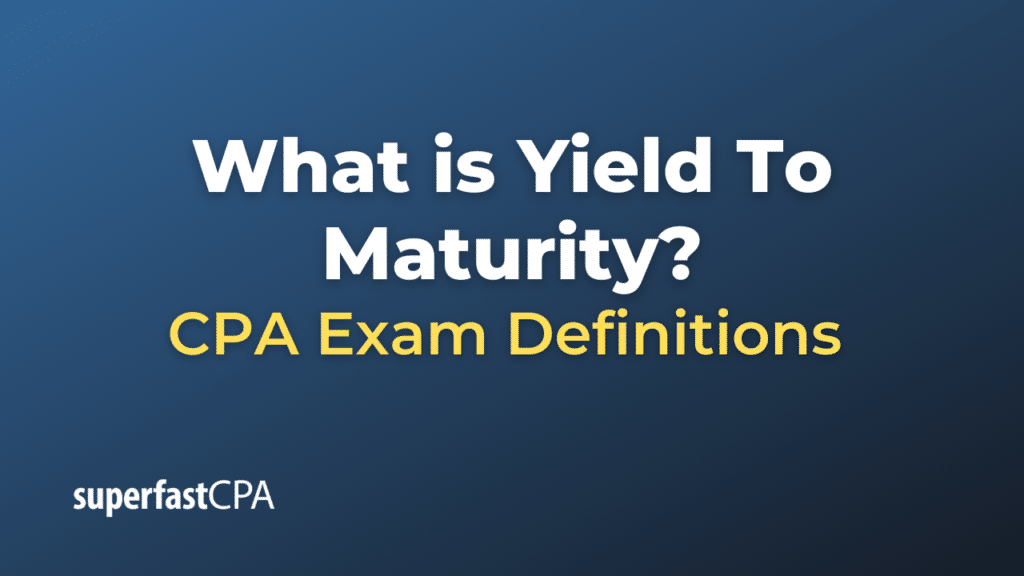Yield To Maturity
Yield to Maturity (YTM) is a financial metric commonly used to assess the total return expected on a bond if it is held until it matures. YTM is expressed as an annual percentage rate (APR) and takes into account the bond’s current market price, its face value (or par value), the number of years left until maturity, and the annual coupon payments.
Components Considered in YTM
- Current Market Price: The price at which the bond is currently trading.
- Face Value (or Par Value): The nominal value of the bond that will be paid back at maturity.
- Coupon Payments: The annual or semi-annual interest payments made to the bondholder.
- Years Until Maturity: The time remaining until the bond matures.
Importance of YTM
- Investor Insights: YTM provides a comprehensive view of the bond’s expected performance and allows for comparisons with other potential investments.
- Risk Assessment: A higher YTM might indicate a riskier bond, as investors demand a higher return for taking on greater risk.
- Pricing and Valuation: YTM is often used to calculate the “fair value” of a bond, which can help investors decide whether a bond is overpriced or underpriced in the market.
How to Calculate
The calculation for YTM is rather complex and often requires numerical methods like the Newton-Raphson technique to solve for it. The formula for YTM, in the case of an annual coupon payment, is:
\(\LARGE YTM = \frac{C + \frac{(F – P)}{N}}{\frac{(F + P)}{2}} \)
Where:
C = Annual coupon payment
F = Face value of the bond
P = Current market price of the bond
N = Years until maturity
Example of Yield To Maturity
Let’s go through a real-world example to illustrate the concept of Yield to Maturity (YTM).
Imagine you’re an individual investor looking to add some bonds to your portfolio for diversification. You come across a bond with the following characteristics:
- Current Market Price: $950
- Face Value (Par Value): $1,000
- Coupon Rate: 6% per annum
- Years Until Maturity: 10 years
The bond pays annual interest. You want to know the Yield to Maturity to assess whether it’s a good investment compared to other options.
Calculating YTM
The Yield to Maturity can be found using the formula:
\(\LARGE YTM = \frac{C + \frac{(F – P)}{N}}{\frac{(F + P)}{2}} \)
Where:
C = Annual coupon payment = 0.06 x 1000 = $60
F = Face value of the bond = $1,000
P = Current market price of the bond = $950
N = Years until maturity = 10
Substitute the values into the formula:
\(\LARGE YTM = \frac{60 + \frac{(1000−950)}{10}}{\frac{(1000+950)}{2}} \)
\(\large YTM = \frac{60 + 5}{975} \)
\(YTM \approx \frac{65}{975} \)
\(YTM \approx 0.0667 \text{ or } 6.67 \)
Interpretation
The Yield to Maturity for this bond is approximately 6.67%. This means that if you buy the bond at its current market price of $950 and hold it until it matures in 10 years, you can expect an annualized return of about 6.67%. You can now compare this YTM to the yields of other investment opportunities to decide whether this bond is a good investment for your portfolio.
Remember that YTM assumes that the bond is held to maturity and that all coupon payments are reinvested at the same rate as the YTM. If these conditions don’t hold, your actual return could be different. Nonetheless, YTM remains a useful measure for comparing the potential profitability of various bonds.













